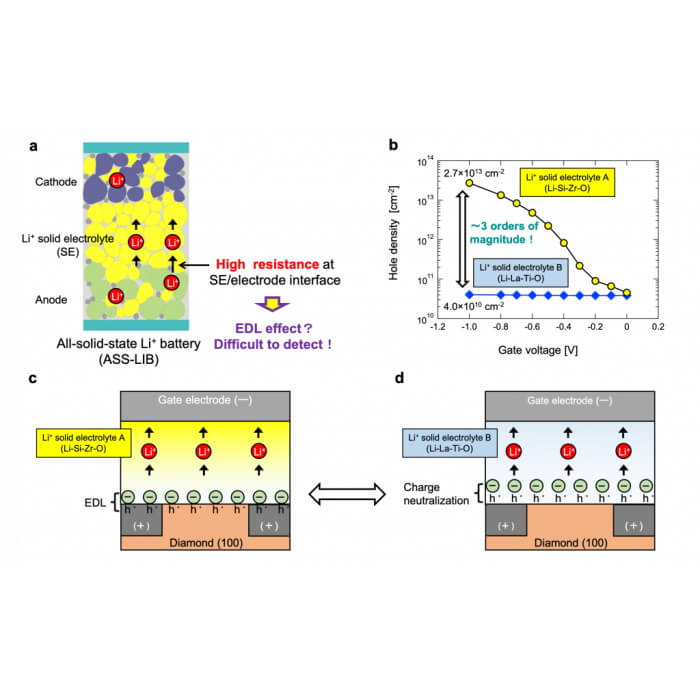All-solid-state batteries are expected to replace conventional batteries with a liquid electrolyte thanks to their improved safety, durability, and capacity. However, the electric double layer (EDL) effect is a phenomenon that is suspected to be a hindrance to battery performance and is difficult to measure.
To tackle this issue, scientists from Japan have developed a new methodology to explore the EDL using diamond-based field-effect transistors, paving the way to better solid-state ionic devices and batteries.
At
Tokyo University of Science, Japan, scientists led by Associate Professor Tohru Higuchi have solved this conundrum using a completely new methodology for assessing the EDL effect in solid electrolytes of all-solid-state batteries.
This study, published online in Nature’s Communications Chemistry, was conducted in collaboration with Takashi Tsuchiya, Principal Researcher at the International Center for Materials Nanoarchitectonics (MANA), National Institute for Materials Science, Japan, and Kazuya Terabe, MANA Principal Investigator at the same organization.
The new method revolves around field-effect transistors (FETs) made using hydrogenated diamond and a solid Li-based electrolyte. FETs are a three-terminal transistor in which the current between the source and drain electrodes can be controlled by applying a voltage at the gate electrode. This voltage, thanks to the electric field generated in the semiconductor region of the FET, controls the density of electrons or holes (‘electron vacancies’ with a positive charge).
By exploiting these characteristics and using chemically inert diamond channels, the scientists ruled out chemical reduction-oxidation effects affecting the conductivity of the channel, leaving only the electrostatic charges accumulated thanks to the EDL effect as the necessary cause.
Accordingly, the scientists performed Hall effect measurements, which are sensitive to charged carriers only on the surface of materials, on the diamond electrodes. They used different types of Li-based electrolytes and investigated how their composition affected the EDL. Through their analyses, they revealed an important aspect of the EDL effect: it is dominated by the electrolyte’s composition in the immediate vicinity of the interface (about five nanometers in thickness).
The EDL effect can be suppressed by several orders of magnitude if the electrolyte material allows for reduction-oxidation reactions that give way to charge compensation.
“Our novel technique proved useful for revealing aspects of EDL behavior at the vicinity of solid electrolyte interfaces and helped clarify the effects of interface characteristics on the performance of all-solid-state Li-ion batteries and other ionic devices,” highlights Dr. Higuchi.
The team now plans to use their method to analyze the EDL effect in other electrolyte materials, hoping to find clues on how to reduce the interfacial resistance in next-generation batteries.
“We hope that our approach will lead to the development of all-solid-state batteries with very high performance in the future,” concludes Dr. Higuchi.
Moreover, understanding the EDL better will also aid in the development of capacitors, sensors, and memory and communication devices. Let us hope exploring this complex phenomenon becomes easier for other scientists so that the field of solid-state ionic devices keeps advancing.
